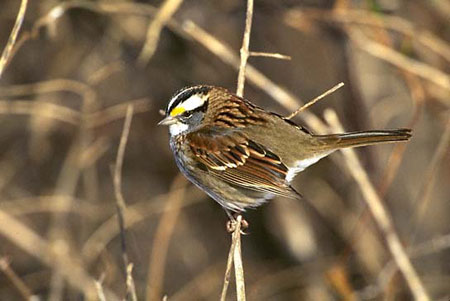A paper by Erin Bayne and colleagues reports on an amazing study that demonstrated for one of the first times, that industrial noise by itself, can cause a decrease in the density of birds near the source of the noise. In this case the authors showed that the noise of the compressor stations used in the process of extracting oil from Alberta tar sands results in fewer breeding birds. Already there are 5000 existing compressor stations in the tar sands whose noise the authors predict may have resulted in 85,000 fewer birds.
The paper, which appeared in the online edition of Conservation Biology, is titled "Impacts of chronic anthropogenic noise from energy-sector activity on abundance of songbirds in the boreal forest."
Here is a picture of a typical tar sands operation - this one owned by Syncrude:

Credit: Garth Lenz
Another recently published paper also based on research done in Alberta, showed some surprising effects of clearcutting on one of the most common winter backyard birds in the eastern U.S.—the White-throated Sparrow. The surprise is that although White-throated Sparrows occurred in areas where forests had been clearcut, their breeding success in clearcuts was much lower than in intact forest. The authors write, "…we present the first evidence to suggest that habitat alteration on the breeding grounds may negatively affect White-throated Sparrows."
This paper (view as PDF) which appeared in the online journal, Avian Conservation and Ecology, is titled "White-throated Sparrow response to forest harvesting in north-central Alberta: results not so clear-cut."
Here's the White-Throated Sparrow:

Credit: Tom Vezo

